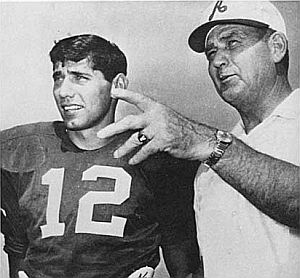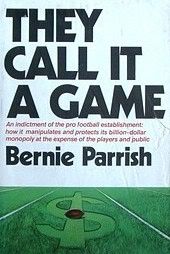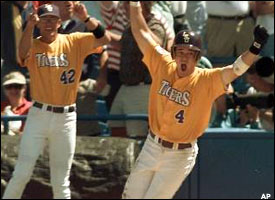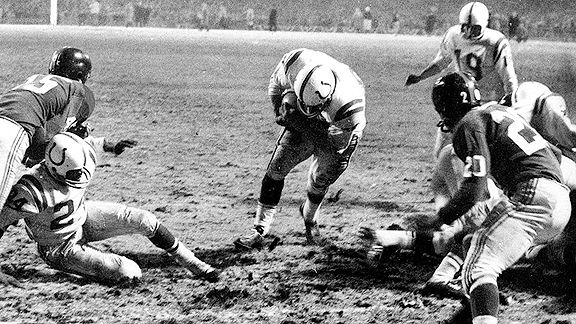 The 1990 College World Series champion Georgia Bulldogs. The 1990 CWS was the first year of the current format used for the SEC Tournament since 1998 in Hoover
The 1990 College World Series champion Georgia Bulldogs. The 1990 CWS was the first year of the current format used for the SEC Tournament since 1998 in HooverThe NCAA developed a format breaking the 8 teams in the CWS into two brackets, four teams each. There would be double elimination throughout the two brackets, but the winners of each bracket would face one another in a winner take all. No double elimination even if a loss in the championship game was that teams' first loss in the CWS. (Starting in 2003 the NCAA started a best of three championship round for the bracket winners.) The SEC adopted this format in '98 with the top three teams from each division and two "at large" teams based on conference winning percentage. In 1999 this was changed to the top two teams in each division getting automatic bids to the SEC tourney and the next four teams ,regardless of division , getting bids based on conference winning percentage. In 2008 the tourney was modified where the two teams in each bracket who won their first two games would rotate, or 'flip' brackets where they wouldn't potentially have to play the same team three times.
Prior to 1998, the SEC changed the format of its various versions of 'tournaments' ten times since 1947. Whereas during broadcasts or discussed in media guides or tournament game programs its mentioned that the tournament began in 1977, the conference did have 'divisional playoffs' from 1947 to 1976 (except for a brief two year lapse in 1951 and 1952). Plus the tournament formats starting in 1977 were nothing like it is now, especially the strange format in from 1993 to 1995.
The addition of Arkansas and South Carolina in 1992 led to divisional play in football and basketball as well as baseball. Divisional play and champions was new to football and basketball,but not baseball. Divisional play started in SEC baseball in 1948 with a myriad of formats through the 1976 season. Strangely, whereas with 12 teams the SEC splits itself neatly into 6 team divisions, that wasn't the case in baseball's original divisional format(s). Former members Georgia Tech and Tulane were part of the twelve team conference until Tech's departure following the 1964 season and Tulane's departure following the 1966 season. Still, the conference had seven teams from the East and five from the West. Even after the Green Wave left and 10 teams made up the SEC, Auburn remained in the East making six teams in the Eastern division and four teams in the Western division until 1976, the last year of the format.Auburn was moved to the West in 1976 where they won that divison and defeated Kentucky to win the league title.
 Former Auburn baseball coach Paul Nix led the Tigers to a third place in the 1967 CWS. Auburn defeated Ole Miss in the SEC playoff that year.In SEC baseball, Auburn was a member of the SEC's Eastern Division from 1948 - 1975.
Former Auburn baseball coach Paul Nix led the Tigers to a third place in the 1967 CWS. Auburn defeated Ole Miss in the SEC playoff that year.In SEC baseball, Auburn was a member of the SEC's Eastern Division from 1948 - 1975.
From 1948 to 1950 composite standings were kept, but divisional leaders met in a best of five championship series to determine the SEC champion. In 1951 and 1952 the league went back to the 1933-1947 format of of champion based on conference winning percentage.Starting in 1953 the SEC divided into Eastern and Western divisions with the division champions playing one another for the SEC championship title.(Division championship winner was the SEC champion,not best conference record like today's format.) This format stayed in tact through the 1976 season. Three times there was a one game playoff to determine a division's representative when there were divisional ties. Ole Miss defeated LSU in 1967 for the Western title and Alabama defeated LSU in 1968 for the title. In the last season of this format, Kentucky defeated Tennessee in 1976.
The league went to its initial divisional format in 1948 and the top team from each division (even though the standings were composite), there was a glitch in the first year. From 1933 to 1947 the champion was based on best winning percentage.Fortunately, and coincidentally as well, the league winner also had the most wins, so any discrepancy in games played was negated. That changed in '48 when Tulane had the best winning percentage at .875 but only played eight games and in the SEC's opinion wasn't a sufficient number of games to play in the playoffs. Six other teams had more wins than the Green Wave and Florida's 12 games were the fewest played next to Tulane. Auburn was the Eastern representative and Mississippi State was named the Western representative in place of Tulane and won the playoff and became the SEC Champion.Nonetheless while the Bulldogs were crowned 1948 SEC baseball champion, to this day Tulane ,by virtue of the best winning percentage that year, considers themselves the 1948 SEC Champion in its baseball media guides.
 The 1948 Tulane Green Wave. Whereas Mississippi State defeated Auburn in the playoff for the SEC title, because of its .875 winning percentage and 7-1 league record, to this day Tulane considers itself SEC Champion.
The 1948 Tulane Green Wave. Whereas Mississippi State defeated Auburn in the playoff for the SEC title, because of its .875 winning percentage and 7-1 league record, to this day Tulane considers itself SEC Champion.With that said, the Greenies were indeed the victim of some bad luck themselves in the 1952 and 1954 seasons. The SEC discontinued playoffs after a three year run in 1948, 1949 and 1950.In 1952 Tulane finished second to Florida in the standings as the Gators were 12-2 with a .857 winning percentage and the Wave was 11-4 with a .733 winning percentage. For Tulane, had the league kept the playoff format as a member of the Western division from 1948-1950, they would have met the Gators in the SEC playoff. The league brought back the playoff in 1953,but it was a year too late for Tulane. The unfortunate events didn't end there for the Greenies. The Gators were scheduled to end its conference season against Tennessee in Gainesville, a team Florida had swept three games from earlier in the season.However after consulting with his baseball team, Vol athletic director Bob Neyland and the UT Athletic Council "conceded" the series with Florida to enable the team to have more preparation time for upcoming final exams. An unlikely sweep of the Gators by the Vols would have given Tulane the SEC title, but the series never materialized. Oddly enough, Tennessee, who finished fourth in the SEC behind Tulane and Alabama ,in addition to Florida, was chosen along with the Gators to participate in the NCAA baseball tournament three weeks later where they were eliminated by Florida.

In his role as Tennessee's AD in 1952, Bob Neyland "conceded" the Vols' season finale at Florida which gave the Gators the SEC baseball title over Tulane in the last season the SEC didn't have a playoff or tournament. Neyland and UT's Sports Council felt the team had missed too much school and needed to prepare for final exams
Two years later Tulane missed out on the SEC playoff as the Western representative for reasons similar to what precluded them from participating in 1948. Georgia had the best overall record and clearly outpaced any Eastern challenger with a 11-4 record and .733 winning clip. The Bulldogs faced ,and ultimately defeated Western representative Ole Miss who had a .667 winning percentage. However, the Rebels only played nine SEC games going 6-3. Tulane was 10-6 with a .625 winning percentage. Due to the fact that Ole Miss was the victim of some rain outs and not merely scheduling, their 9 game SEC season carried more weight that Tulane's 8 game SEC season in 1948 and the Rebels got the nod over the Wave.
These weren't the only examples of curious and bizarre events impacting the SEC baseball champion and the slowly developing NCAA baseball tournament .While NCAA baseball certainly remains behind football and basketball now it was light years behind where it is now in terms of popularity , NCAA's selection process, compliance and enthusiasm for teams' participation in the NCAA post-season. Only once between 1951 and 1961 did the SEC champion solely represent the SEC in the NCAA tournament (Alabama in 1955) and no SEC champion represented the SEC in the NCAA tournament except the 1955 Tide from 1954-1961.
 No SEC Champion played in the NCAA tournament from 1956 through 1961. Ole Miss and coach Tom Swayze,whom the Rebels' field is named after took Florida's place in 1956 and finished 3rd in the CWS. Ole Miss won the SEC in 1959 and 1960 but had to decline the bid to the NCAA tourney
No SEC Champion played in the NCAA tournament from 1956 through 1961. Ole Miss and coach Tom Swayze,whom the Rebels' field is named after took Florida's place in 1956 and finished 3rd in the CWS. Ole Miss won the SEC in 1959 and 1960 but had to decline the bid to the NCAA tourneyAs the NCAA tournament evolved to bona-fide "at large" teams in the mid 1970's a la the NCAA basketball tournament there was a brief period in the early 1950's where more than one team from a conference was selected to play in the various "districts" the precursor to today's regionals. Tennessee went to the 1952 NCAA tournament in addition to league champion Florida and Mississippi State joined league champion Georgia in 1953.
Georgia won the SEC the following year in 1954 but declined the NCAA bid with Georgia AD Wally Butts stating that in addition to the Bulldogs needing to prepare for quarterly final exams, Georgia would have four starters ineligible due to freshman participation. For a period in the 1950's , freshman athletes were eligible to participate in regular season games,but if they did and their school was selected to compete in the NCAA tournament in their sport, they would be ineligible to participate in post season play.With a starting catcher, second baseman, left fielder and center fielder being ineligible due to the freshman rules, Georgia declined its bid and stayed home.
Florida defeated Ole Miss two games to none in the 1956 SEC playoff to capture the league title, but the Gators weren't able to go on to the NCAA tournament due to its recent probation handed out preventing the Gators from post season participation for two years. Ole Miss vacillated in participating and not due to strong play by four freshmen like the '54 Georgia squad,but played in the tourney anyway, sans its star freshmen and advanced all the way to Omaha and the College World Series where they finished third behind Arizona and Minnesota.
Like 1954, the SEC had no participants in the 1957 NCAA tournament. League champion Georgia Tech declined the bid due to number of freshmen in key roles who would be ineligible to participate. Alabama, whom Tech defeated in the SEC playoff was offered Tech's "slot" but eventually declined due to a planned trip to the Far East against teams from Japan, Korea, Okinawa and Hawaii to take place about the time the College World Series would start.
In 1958 neither the SEC champion nor runner-up participated in the NCAA tournament and the team that eventually represented the SEC threatened to abolish college baseball altogether. Eastern champion Auburn defeated Western champion Alabama two games to none by one run to win the SEC championship at Birmingham's historic Rickwood Field. Auburn was in the midst of an initial three year probationary period which would eventually stretch into six and was ineligible to compete in post-season. Runner-up Alabama declined the bid and the bid eventually went to Eastern runner-up Florida but not before a meltdown by Gator athletic director and football head coach, Bob Woodruff. In between Auburn's SEC title and the NCAA selection, the Gators lost a second two-sport star for the second time in as many years when Bernie Parrish signed with the Cincinnati Reds therefore ending his collegiate eligibility precluding him from Florida's 1958 NCAA tournament and Woodruff's football team where he was a star halfback.At the SEC's Spring meetings taking place in Birmingham Woodruff elicited support from two other heavyweights at the time with dual roles as head football coach and athletic director in Georgia Tech's Bobby Dodd and Alabama's newly hired head coach, Paul W. "Bear" Bryant.Dodd and Bryant agreed with Woodruff's proclamation that the SEC and other major conferences "should abolish college baseball until an agreement can be reached with professional baseball that would eliminate signing of college players until they graduate." (Parrish did go on to have a successful professional career in Ohio,but it was with the Browns of the NFL. He made All-Pro in 1960 and 1963 and at the conclusion of his career wrote a controversial book entitled, "They Call it a Game" a less than flattering description of the NFL indicting the league for its greed, manipulations and alleging without any specific facts or instances, the fixing of games.)


Third place Florida represented in the SEC in 1958 after champion Auburn was ineligible and runner-up Alabama declined. Before Florida accepted, Gator AD and football Head Coach Bob Woodruff threatened to drop baseball after his star halfback and All-SEC LF Bernie Parrish signed with the Reds. New Alabama coach Bear Bryant in his role as the Tide's AD and Georgia Tech's AD and head football coach Bobby Dodd agreed with Woodruff that the league should consider dropping the sport unless MLB stayed away from underclassmen. Parrish,who wound up with the NFL's Browns caused more controversy in 1970 with scathing book about the NFL's way of business
Race played a part in the decisions made by the 1959, 1960 and 1961 SEC Champions. Ole Miss won the league title defeating Georgia Tech and Florida respectively in 1959 and 1960. The Rebels declined the NCAA bids due to "unwritten" but strongly implied state rules in Mississippi by not engaging in athletic participation against teams with "Negroes" on the squad. Whereas no team in the District III where the SEC team was sent had blacks on the squad, each participating team in the NCAA tourney had to ensure the association that it would not 'default' any games in the tournament. With the likelihood of a team reaching Omaha with a black player, Ole Miss couldn't take a chance on advancing and facing such a dilemma. Tech and Florida represented the SEC in '59 and '60.
LSU won two SEC titles before NCAA tournament play in the 1930's. LSU's Tigers defeated Auburn's Tigers from the East two games to none to win the 1961 SEC title. Faced with a similar battle as Ole Miss and Mississippi, Louisiana laws at the time precluded LSU from participation with the potential of facing a team with a black player or players. Louisiana's law was more far reaching than just keeping LSU from playing a black team as the Sugar Bowl football game and basketball tournament would be precluded from inviting competing squads with black athletes. Runner-up Auburn was on probation and therefore ineligible for post season play, so no SEC team participated in the 1961 NCAA tournament.

Louisiana laws prevented 1961 SEC Champion LSU from playing in the NCAA tournament. State law also disallowed any state team or event inviting teams with Negro players to Louisiana, therefore the Sugar Bowl had all Southern teams from '57-'64 like 7-3 unranked SWC runner-up Rice in 1961
For the duration of this format from 1962-1976, each SEC champion did indeed participate in the NCAA tournament. From 1977 to 1985 the league kept its divisional format (with Auburn finally moved to the West in 1976) where the top two teams from each division would meet at the alternating site of the division champion in a double-elimination tournament to decide the league champion.In 1977 the NCAA added an "at large" team and since 1977, the SEC has sent at least two teams to the NCAA every season since 1980, when surprise SEC champion Vanderbilt was the lone representative.
1986 began round-robin play for the first time and the tourney consisted of the top 4 teams to determine the league champion . The participating teams were expanded to six starting the following season. From 1988-1991 the league champion was based on best regular season percentage while the top six teams met for the tournament title. With the addition of Arkansas and South Carolina in 1992, this was modified to recognize division champs in addition to the SEC champion being based on best overall record plus top six teams competing for the tourney title.
In 1993, obviously the SEC didn't know what to do with 12 teams in a tournament and for three years had divisional tournaments where the games would count in effect as a regular season game as the compilation of regular season games and tournament wins would produce the overall SEC Champion based on the most total SEC wins. In 1993 three rain outs and a tie gave LSU a league mark of 18-8-1 heading into the Western division tournament while Tennessee took a 20-10 mark into the Eastern tournament. Percentage wise LSU led Tennessee .690 to .667. Both division regular season winners won their respective tournaments with LSU going 4-1 in Oxford and Tennessee going 5-1. Prior to the Internet and streaming, the phone lines between LSU and UT sports information types were lit up as two LSU losses or Tennessee going unbeaten in the tourney would give the Vols the SEC title, yet LSU hung on for the league title with a composite .700 winning percentage to Tennessee's .690.

Tennessee's Todd Helton was three time SEC Eastern Division tournament MVP in 1993,1994 and 1995 in the SEC's odd and short lived divisional tournament format. Helton's injury at QB in the 1994 season led Peyton Manning being forced into action as a true freshman
Mercifully this format was euthanized after the 1995 season and the SEC experimented with "pool play" in 1996 this time at Hoover for the second time ever and first time since 1990 when the tournament title ended in a "tie" when Roy Kramer called off the LSU-Mississippi State game with LSU up 6-0 in the fourth after a series of lightning bolts nearby. The SEC champion would be the team with the best winning percentage over a 30 game regular season and the tournament winner would be the SEC's automatic qualifier.The tourney consisted of the top 3 teams from each division and two overall at-large teams.Regular season Co-Champions Alabama and Florida squared off in what turned out to be a double header won by the Tide to win the tournament. The third "co-champ", LSU eliminated the night before by Kentucky went on to win the College World Series as the Tide and Gators also advanced to Omaha.
 LSU, Florida and Alabama all shared the 1996 regular season title. Alabama defeated Florida for the SEC Tournament title. Three weeks later, Warren Morris (4) hit a two run ,walk off home run (his first and only homer in '96) to give LSU an 8-7 win over Miami and the 1996 CWS Title
LSU, Florida and Alabama all shared the 1996 regular season title. Alabama defeated Florida for the SEC Tournament title. Three weeks later, Warren Morris (4) hit a two run ,walk off home run (his first and only homer in '96) to give LSU an 8-7 win over Miami and the 1996 CWS Title




 Two sport stars Jared Mitchell (left) and Chad Jones helped
Two sport stars Jared Mitchell (left) and Chad Jones helped  Bo knew All-Star games in 1989 playing in the
Bo knew All-Star games in 1989 playing in the  "The Greatest Game Ever ",also known as the 1958 NFL title game, featured two SEC players who starred in college baseball as well as football,Baltimore's Bert
"The Greatest Game Ever ",also known as the 1958 NFL title game, featured two SEC players who starred in college baseball as well as football,Baltimore's Bert 

 Archie helped lead Ole Miss to the 1969 SEC title and a trip to Omaha for the
Archie helped lead Ole Miss to the 1969 SEC title and a trip to Omaha for the  Bert Jones' initial target in the 1972 Ole Miss-
Bert Jones' initial target in the 1972 Ole Miss- In addition to being the
In addition to being the 
